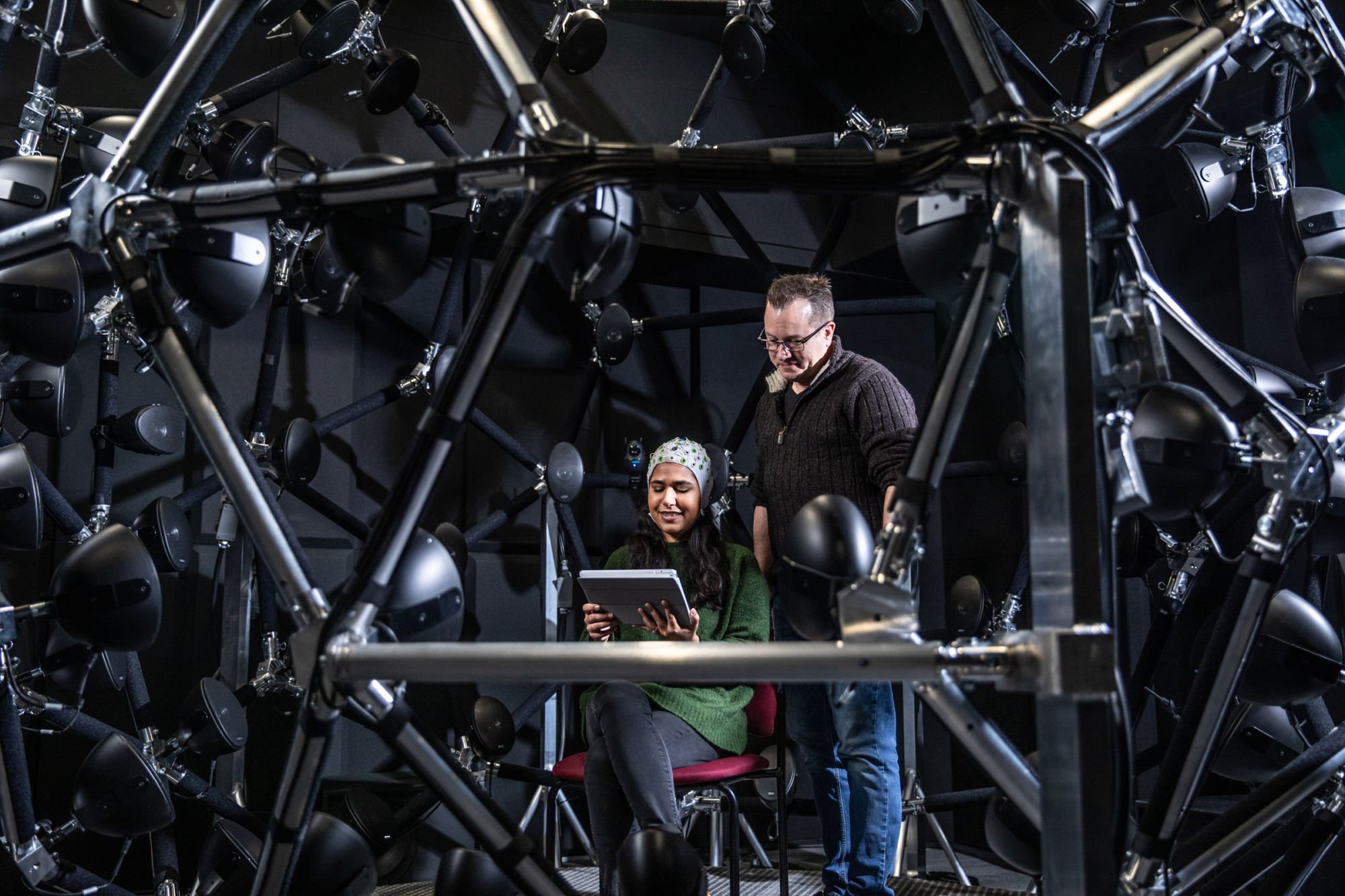When exploring virtual reality, most consider the simulation as a visual experience. New technology at Western University will allow neuroscientists and audiologists to investigate simulated spaces through sound.
Ingrid Johnsrude, Director of Western’s renowned Brain and Mind Institute, and her collaborators at the School of Communication Sciences & Disorders and the National Centre for Audiology will now be conducting auditory assessments and cognitive neuroscientific studies using an advanced geodesic dome, boosted by more than 100 speakers, allowing researchers to better understand how people’s brains process sounds.
“For too long, auditory research has involved people listening to single sounds in sound booths – and that’s just not how we listen in the real world and make sense of our auditory environment,” says Johnsrude.
[rand_post]
Using the geodesic dome, Johnsrude and her research partners will be able to recreate the auditory ‘scenes’ present in everyday life, where and when more than one sound is usually present at a time.

“This array allows us to present real auditory scenes to our research participants to understand how they make sense of and organize sounds,” explains Johnsrude. “It fits well with our goal in the Brain and Mind Institute to study human behaviour and cognition in real-world environments.”